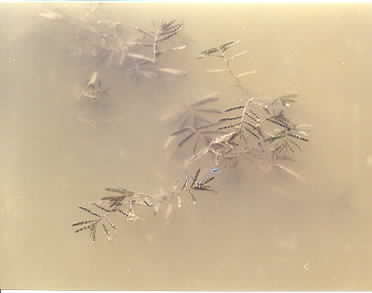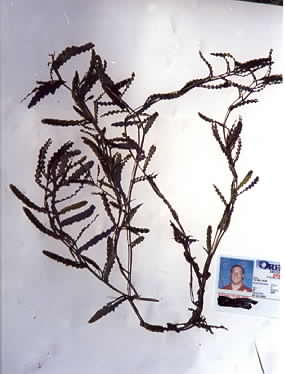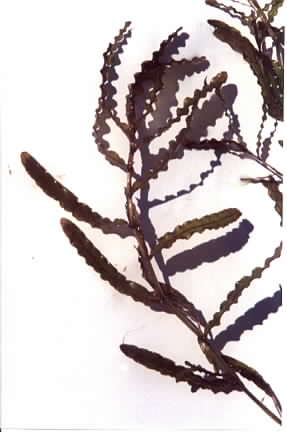


General Species Description
- Curly Leaf Pondweed is a robust aquatic, perennial herb that emerges from rhizomes and roots at the lower nodes. The leaves are 3 mm thick and 3-10 cm long, with curly margins and a mucus-like coating. The plants have submerged and partially floating leaves. The flowers have four petals and exist in spikes that attach to the stems and extend erect from the water.
Leaves
- The leaves are 3-10 cm long, 1-2 cm wide. They have curly, somewhat parallel margins. Leaves thickness is 3 mm and a mucus like coating covers the leaves. Alternate leaf arrangement on a many branched stem. Leaves have sessile attachment.
Inflorescence/Flowers
- Occur on peduncles that arise from the area between the leaf bases and stems (axillary). Inconspicuous four petaled white/green flowers.
Fruits
- Inconspicuous, tiny brown seeds. Rarely observed due to aquatic nature.
Habitat
- Curly leaf pond weeds grow in fresh water up to 2 meters deep. The growth can be limited by turbid or polluted water sources. This plant grows in dense mats that can become so heavy they have been known to break off into raft-like structures. These masses of vegetation are rich in phosphates and they are associated with resultant algal blooms.
Range
- Southern Canada, United States, Mexico to South America.
Similar Species
- Rarely confused due to the curly leaf margin.
Ecological Value
- All Potamogetan sp. are responsible for a high metabolic production of aquatic oxygen.
Human Value
- Potamogetan crispus is a native of Eurasia. Curly Leaf Pondweed has the highest metabolic activity of any aquatic plant species. This can be a beneficial contribution of oxygen to poor water sources. However, the late season growth of rhizomes and turions aid the plant in its early growth to the surface of the water. This quick growth crowds other competitors and as a result P. crispus often forms dense mats.
References
- Cooke, S.S., ed.1997. A Field Guide To The Common Wetland Plants Of
Western Washington and Northwest Oregon. Seattle Audubon Society and
Washington Native Plant Society. Seattle Audubon Society, Seattle, WA, 417 pp.
- Virginia Tech Online Weed Identification Guide http://www.ppws.vt.edu/scott/weed_id/ptmcr.htm
- USDA National Plants Database http://www.plantsusda.gov
This page was created by: Andrew R. Collins, August 2002
Return to Northwest
Oregon Wetland Plants Project